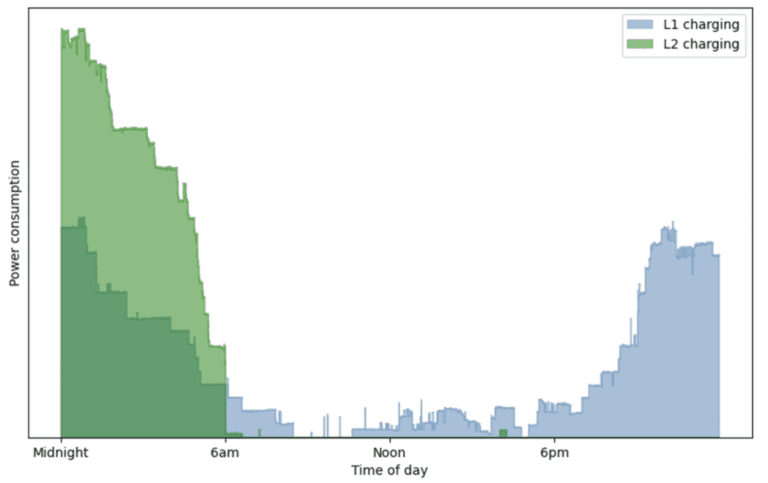Electrification offers upgrades on both sides of Sense-enabled meters
Many utilities are implementing projects to integrate electric vehicles (EVs) into home-energy management systems as the transition to electric transportation accelerates. These projects aim to explore the benefits – on both sides of the smart meter – of linking EVs to energy management programmes and technology.
Below we explore where the convergence of these technologies may be headed and look at some of the opportunities to find success for both utilities and EV drivers.
EV growth turns a corner
The move to electrify transportation is ramping up rapidly. According to the International Energy Agency (IEA), global EV sales in 2023 were 3.5 million higher than in 2022, a 35% year-on-year increase. IHS Markit forecasts that global battery electric vehicles (BEV) car sales will reach 23.5 million by 2030, accounting for approximately 26.4% of total global sales.
Climate mandates are driving deployment of variable renewable energy sources, making grid balancing more challenging. Shifting transportation energy demand to these same grids is fuelling interest in new solutions to balance supply and demand.
Research shows that about 80% of EV charging happens at home. A Stanford University study indicates that if EV sales grow as expected, vehicle charging could strain the electricity grid, increasing peak demand by 25%. That is concerning as utilities try to keep blackouts at bay amid rising electricity demand. However, EV charging is dispatchable and flexible, making it a natural fit with whole-home energy management, alongside solar, battery storage, and energy efficiency.
Giving EV drivers power
EV charging demand can be high – 2X an electric dryer and 30-50% of monthly residential usage. Left unchecked, EVs can create unpredictable loads, potentially causing grid stress. Unlike other home energy loads, EV charging can be flexibility scheduled throughout the day.
Time-of-use (TOU) pricing tariff incentivises customers to consume energy during off-peak times. For example, in the UK, Octopus Energy has a TOU rate specifically for EV owners – users can charge at a reduced rate of 7p/kWh.
However, optimising solely through rates will not meet the needs of a more dynamic grid. “Smart” or “Managed” charging should consider overall home energy use, rooftop solar generation and availability of low-carbon resources.
Achieving this type of orchestration will require two critical components:
- Intelligent decision making: This must account for the entire home’s energy usage. Next-generation smart meters and their ability to see both in front of and behind the meter uniquely position them to be at the centre of the approach.
- Consumer preferences: Consumers must be able to set dynamic preferences that give utilities flexibility without inhibiting their lifestyle.
Sense technology can play a key role as climate-change mitigation and EV adoption converge in homes. Sense helps customers understand their real-time device level energy usage and enables them to set preferences and respond in real-time when action is needed.
For utilities, understanding the impact of not only EV acceleration but the different charging levels consumers opt into is crucial. Level 1 (L1) chargers use standard household sockets, while Level 2 (L2) chargers are installed home chargers, each with distinct characteristics and effects on energy consumption and grid stability. Sense provides visibility into consumer charging preferences, aiding in forecasting and resolving grid challenges as EVs become more popular.
Case study: EV Visibility in Melbourne

In Sense’s Australian pilot, we’ve achieved a 100% detection rate on EVs in Melbourne. The graph above illustrates the sum of consumption across the day, with L2 chargers in green and L1 chargers in blue, highlighting a clear difference in charging styles.
All EVs on L2 faster chargers turned on instantly at midnight, while manageable now, such sudden switch-ons could cause challenges for the grid, leading to spikes in energy prices. This scenario demonstrates the need for replacing a single static TOU tariff with more flexible TOU and demand response strategies.
L1 slow chargers distribute usage throughout the day. While they consume a similar total amount of power, there is an opportunity to shift this load to support capacity and reduce costs.
Positioning EVs for better reliability
Globally, utilities are exploring solutions to enhance grid resiliency and reliability of supply to customers. In the UK, trials are underway to use EV batteries for home backup power and grid support. In Japan, Nissan’s EVs provide emergency power during disasters. Similar pilots are gaining traction in countries like Australia and the Netherlands.
Pilots show significant potential for harnessing EVs for home backup power (V2H) and grid resiliency (V2G). EV batteries can hold approximately 60 kWh of energy, enough to power a home for a couple of days with conserved use.
Bi-directional charging, when mandated for EVs, ensures power stability for both EV owners and other consumers who could benefit from these “rolling batteries” when the grid becomes constrained.
For these programmes to succeed, customers must feel in control. They want to do the right thing but also need assurance that their EV will have sufficient charge for their next journey. With solutions like Sense, the whole home’s needs and resources can be calculated along with customer preferences, ensuring the right decision is made each time.
In the end, engaged consumers are ready and primed to manage their energy usage, including EV charging.
